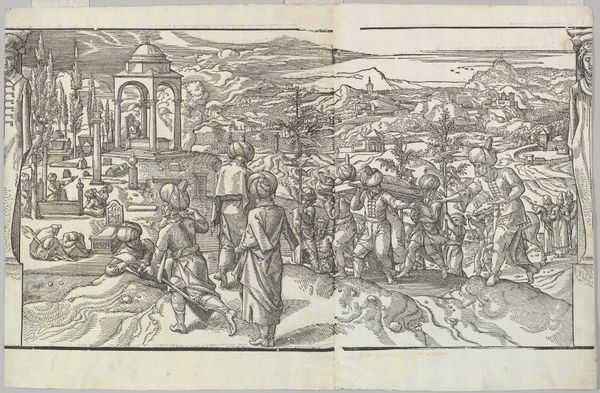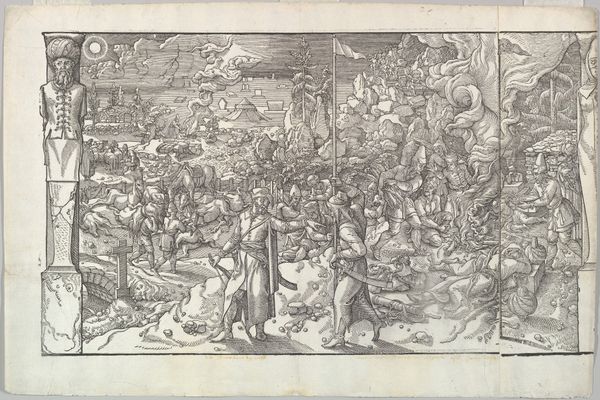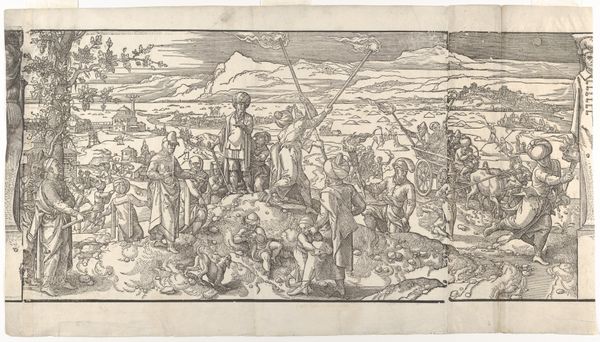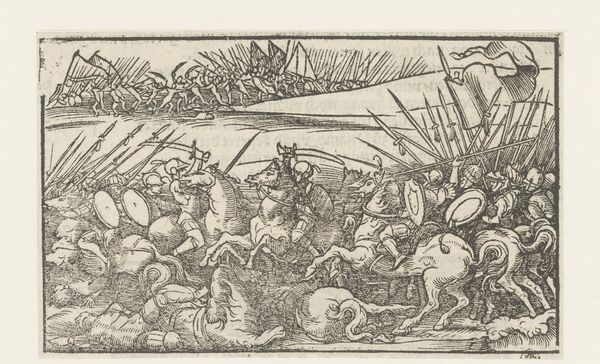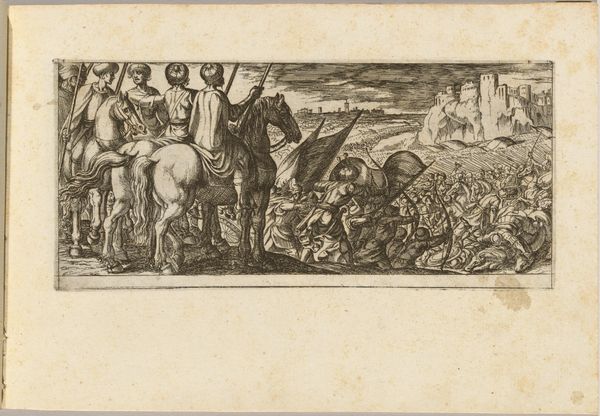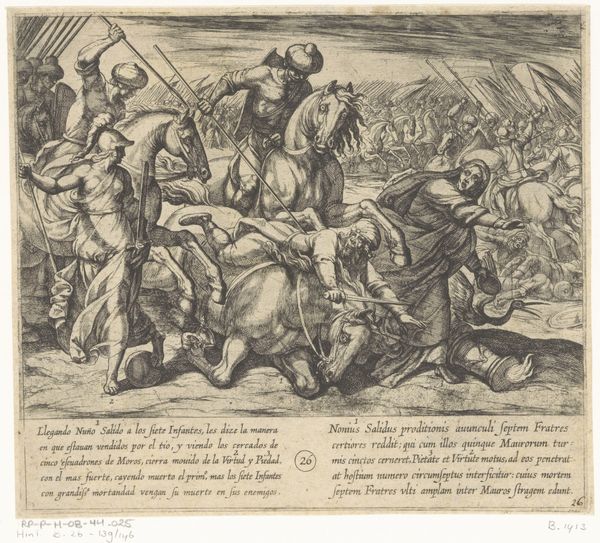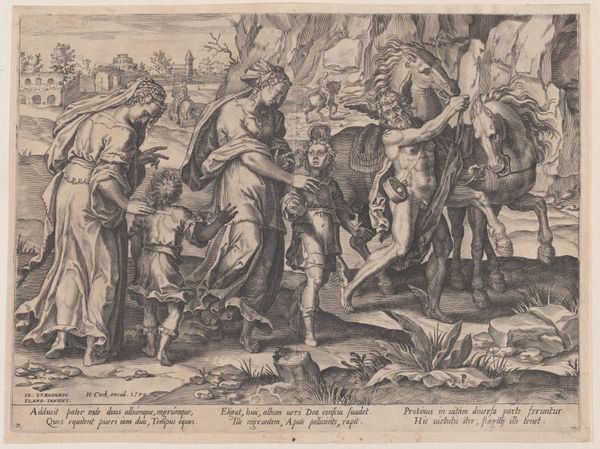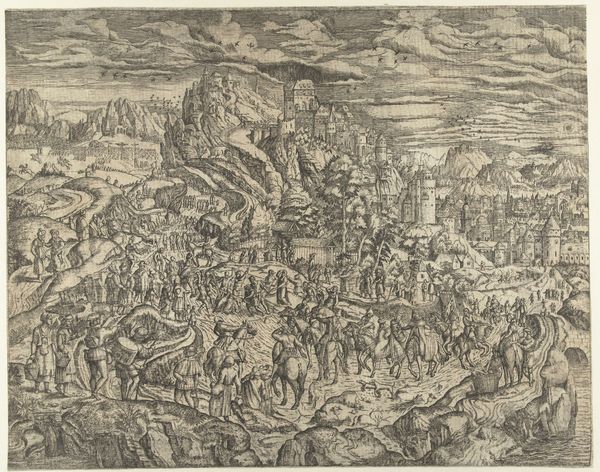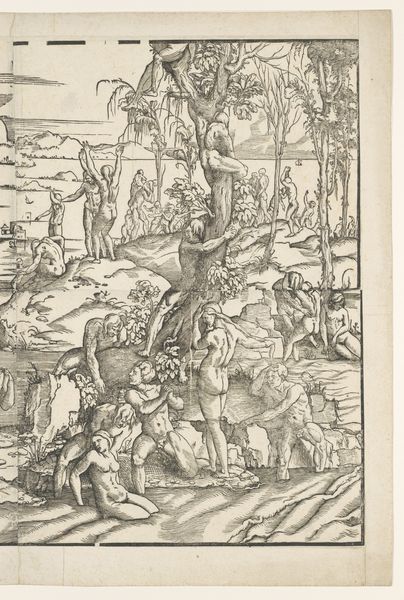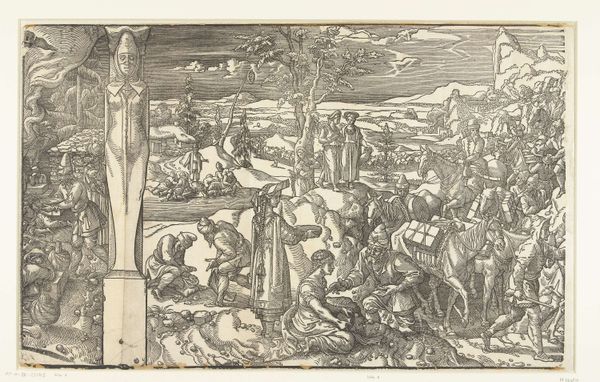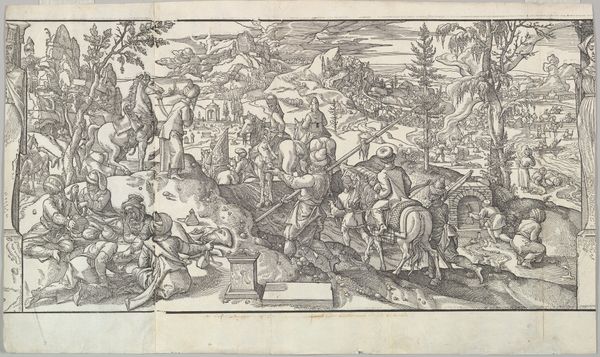
The Passage of a Caravan from the frieze Ces Moeurs et fachons de faire de Turcz (Customs and Fashions of the Turks) 1553
0:00
0:00
drawing, print
#
drawing
# print
#
pen sketch
#
personal sketchbook
#
sketchwork
#
ink drawing experimentation
#
pen-ink sketch
#
horse
#
men
#
pen work
#
sketchbook drawing
#
storyboard and sketchbook work
#
sketchbook art
#
initial sketch
Dimensions: Sheet: 13 11/16 × 26 7/8 in. (34.7 × 68.2 cm)
Copyright: Public Domain
Editor: This is "The Passage of a Caravan from the frieze Ces Moeurs et fachons de faire de Turcz (Customs and Fashions of the Turks)" a print by Pieter Coecke van Aelst, from 1553. It’s so detailed! What strikes me is how it seems to document everyday life. What stories do you see unfolding here? Curator: It’s fascinating how a seemingly simple scene like a caravan's passage can become a tapestry of cultural and historical memory. Note how meticulously van Aelst captures details of dress and activity; do these details strike you as neutral observations, or might they carry encoded meanings for a 16th-century European audience? Editor: Encoded meanings? I hadn’t thought about that. Maybe the way they dress, certain gestures… it could all be symbolic. Curator: Exactly. Think about the "exotic" East and its representation in European art. The caravan, beyond its literal function, becomes a vehicle for transmitting not just goods but also ideas about cultural difference, trade, and power dynamics. How does the artist present these figures? As noble traders or perhaps as something else entirely? Editor: Now that you mention it, there's a certain detachment in how they are portrayed. Almost like specimens in a catalog. It definitely gives a different weight to what’s happening. Curator: Precisely! This is where iconography transcends simple observation. It becomes a powerful tool for shaping perceptions, perpetuating stereotypes, and negotiating identities across cultural divides. It invites us to question how we interpret unfamiliar imagery and what assumptions we bring to our viewing experience. Editor: This really puts the artwork in a whole new perspective. Thanks for sharing that, I’ll definitely look at art differently now. Curator: Indeed. It shows us the cultural endurance of an artwork through visual symbolism.
Comments
No comments
Be the first to comment and join the conversation on the ultimate creative platform.
